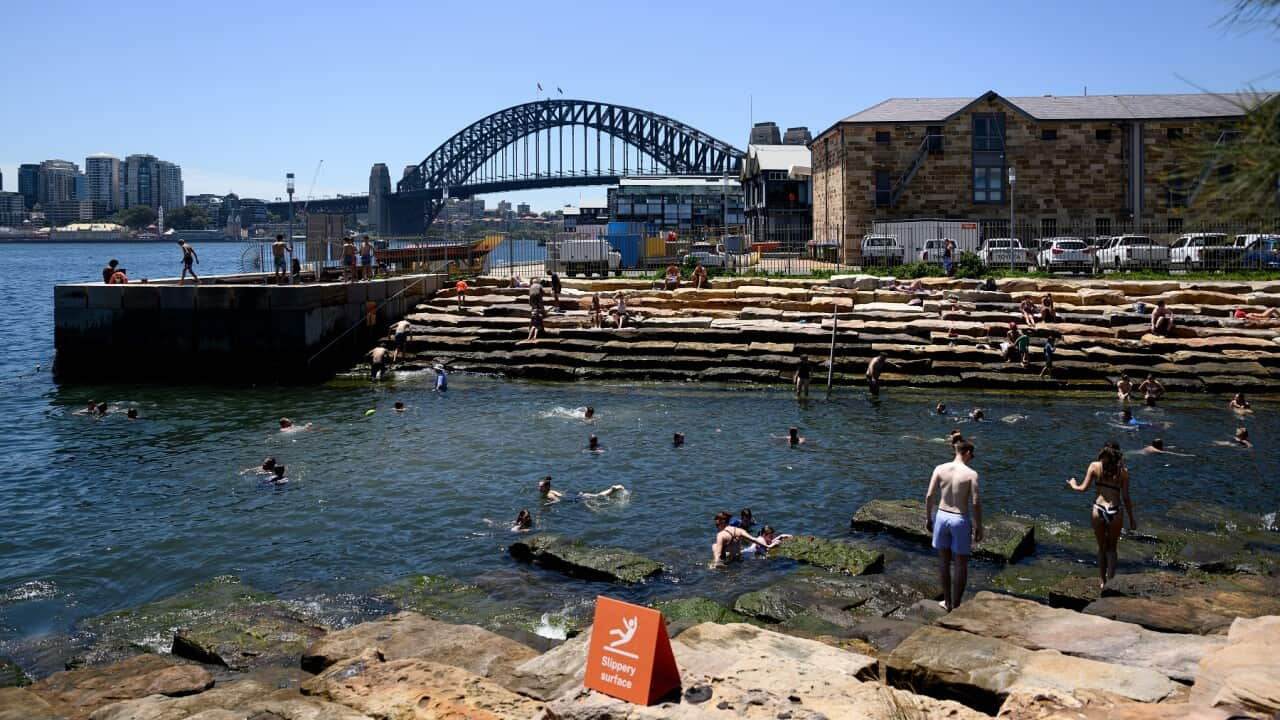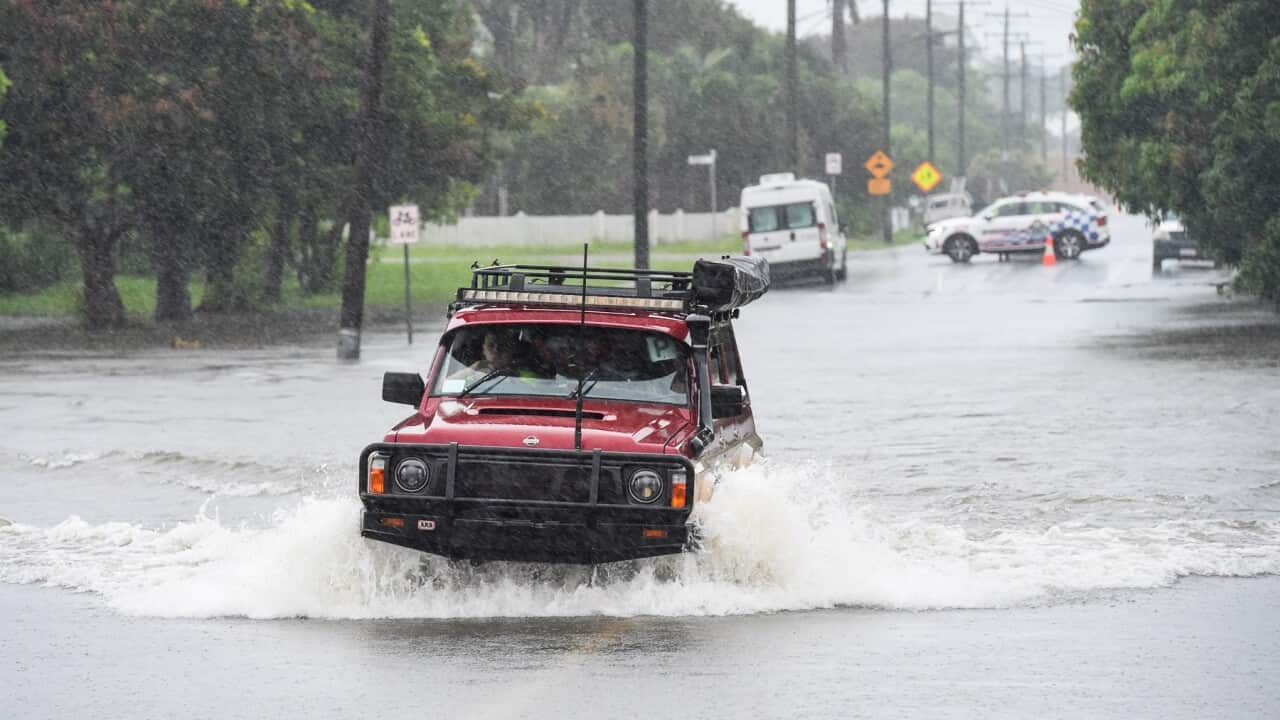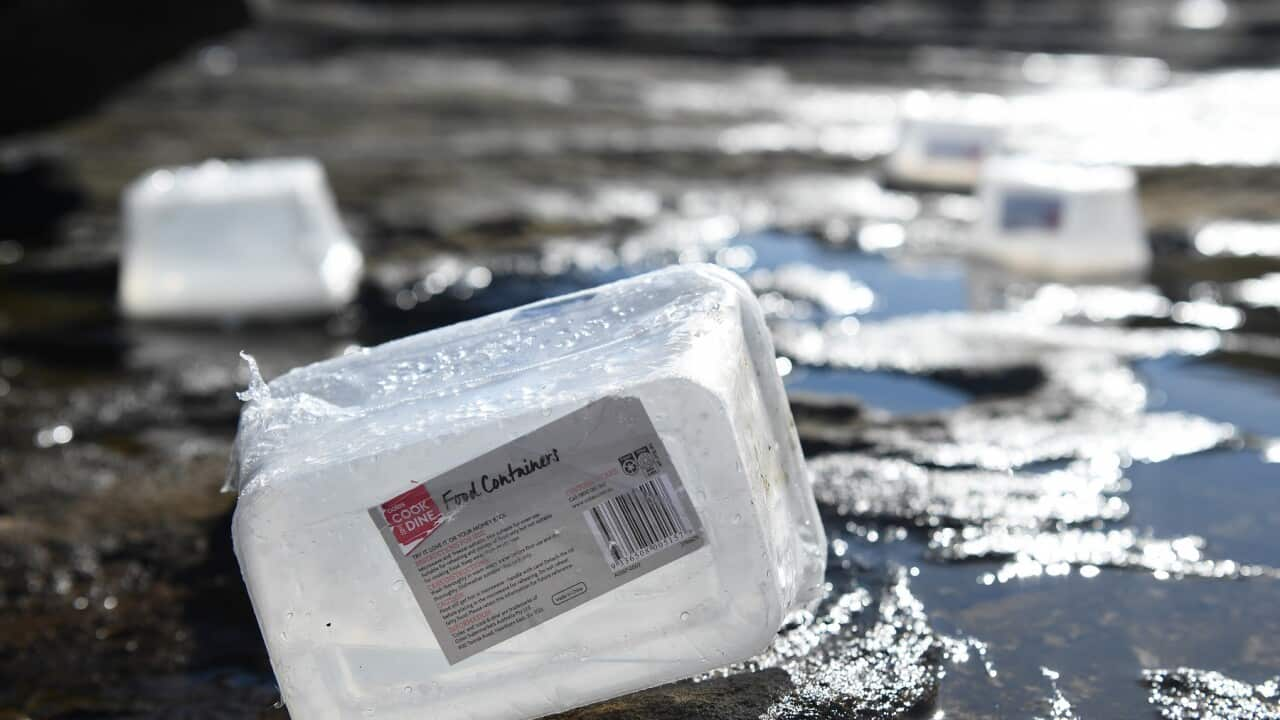TRANSCRIPT
In this episode of 2024 the Year in Review, we look at climate change.
It's been a big year of weather extremes - and the impact of that can be seen in the health of Australia's Great Barrier Reef.
From space, the contrasting blue waters of the shallow lagoons and deep waters can be seen as the largest living structure on Earth.
Located in the Coral Sea, off the coast of Queensland, the world's largest coral reef system covers 348,700 square kilometres - about the same size as Italy or Japan.
There are around 600 different coral species on our Great Barrier Reef, and it is also home to nearly 9,000 species of marine life.
Scientists monitoring the World Heritage site say there's been further damage since December 2023, after an extensive mass bleaching event, two cyclones and flooding.
Dr Manuel Gonzalez Rivero [[Man-well]] [[Riv-air-oh]] is the acting research program director for the Australian Institute of Marine Science, which has been surveying the reef since 1972.
"If further disturbances happen - like bleaching events or cyclones or more crown-of-thorns starfish outbreaks. We'll expect that the coral cover will not regain the levels that we've seen before. In the Great Barrier Reef, we've seen the average is about 20 to 40 per cent coral cover, which is an indication of a healthy reef. What we've seen now is that coral cover is declining by two-thirds of what it was there before, but also not all the corals have been affected in the same way. We've seen Acroporas - one of the fastest growing corals that gained, that was the main driver of recovery in the past five years, being severely affected by the past bleaching event."
The terms megafire and megadrought are being using to describe the intensity, size and duration of the events facing people around the globe.
In the past 20 years, extreme fires have doubled globally.
That's according to a study published in peer-reviewed journal Nature Ecology and Evolution in June this year.
It comes as data shows global carbon dioxide emissions from fossil fuels rose to a record level of 37.4 billion tonnes.
That's a rise of 0.8 per cent in the last 12 months, according to the Global Carbon Budget.
The Climate Council in Australia says it is using the term "climate whiplash" to refer to the wild swings between many weather extremes, driven by climate change.
In their two-yearly report card on long-term climate trends in Australia, the Bureau of Meteorology and the CSIRO finds Australia's climate has warmed by 1.51 degrees [[Celsius]] since 1910.
Sea surface temperatures have increased by an average of 1.08 degrees since 1900.
Dr Karl Braganza, from the Bureau of Meteorology, says the rate of change shows how rapidly our climate system is changing.
"And this warming is largely now locked in. It is due to greenhouse gases that have already accumulated in the atmosphere. And those greenhouse gases will continue to warm the oceans, in particular over the next couple of decades."
In October, Spain experienced record-breaking rainfall and flash floods, the deadliest in decades.
More than 220 people died in the eastern coastal area of Valencia.
This resident says there was widespread anger in the aftermath.
"All these past days the army was not here, there were volunteers coming in waves of hundreds and hundreds. They have helped us a lot and now we are grateful that the army is there. But I'm telling you, this happened on Tuesday, and today it is Sunday."
Bangladesh experienced the worst floods in 34 years during the monsoon season between June and September.
At least 71 people were killed, with some 1.2 million families trapped for weeks in the flood waters, at risk of catching an infectious disease.
East of the capital Dhaka, in Comilla, farmer Abdul Halim returned to his home, to find nothing left.
"I used to live in this mud hut with my family. A strong current of flood water destroyed the house. So, I sent my family to a shelter, and I am guarding the household. There's no way of living in here anymore."
Bangladesh is also facing its worst dengue fever outbreak in years, due to a longer monsoon season and rising temperatures.
More than 400 dengue-related deaths have been recorded this year.
Three of the five leading research groups monitoring global temperatures consider 2024 will be the year in which monthly and annual warming temporarily will surpass 1.5 degrees Celsius above pre-industrial levels.
The UN's weather agency says that single year does not mean the Paris Agreement has been broken. It says long-term warming - measured over decades - remains below 1.5 degrees.
The U-N says unless there is a drastic change, under current policies, the world is on track for 3.1 degrees Celsius of warming this century.
UN Secretary-General Antonio Guterres, says that should motivate world leaders to act.
"Heat is estimated to kill almost half a million people a year, and that's about 30 times more than tropical cyclones. We know what is driving it; fossil fuel charged, human induced climate change. And we know it's going to get worse. Extreme heat is the new abnormal. But the good news is that there are solutions. The good news is that we can save lives and we can limit its impact."
Setting a new climate finance target was the key goal at the U-N climate summit COP29 in Azerbaijan.
Those funds from rich nations would help poor nations cope with impacts of climate change.
Nearly 200 countries were represented at the talks, which ran overtime by more than 30 hours.
The final climate finance target amount has angered developing nations.
The minimum of US$300 billion a year can come from a wide variety of sources, including public funds, development-bank loans and private finance.
Samoa's Climate Envoy, Toeolesulusulu Cedric Schuster, says the amount is less than a quarter of the amount sought by developing countries - but at least it's an important start.
"Still not the deal that we wanted. We didn’t come here to get the outcome, but in terms of the spirit of multilateralism we wanted to engage with all the other countries, and come up with an outcome. Some, especially in the NCQG (New Climate Quantified Goal) and mitigation areas that didn’t go anywhere. But we’re satisfied in a way. We got something to start with."
Writing in The Guardian newspaper, Cop29 President Mukhtar Babayev said his negotiating team had tried but failed to push up support for the global south.
However, he points out it is a major step forward from the $100 billion US dollars pledged in Paris back in 2015.
Australia has a bid to host COP31, alongside Pacific nations.
At COP29, Australia's climate change minister, Chris Bowen announced Australia would be making the sixth largest funding pledge of $50 million [[Australian dollars]] to a historic climate loss and damage fund.
"This year, I returned to Fiji to meet with climate ministers from across the Pacific, where the impacts of climate change are a clear and present danger - not far away abstractions, where climate change is not seen as a subject for negotiation but a matter of their very existence. This is a message that the world needs to hear and a reality the world needs to see."
Put into operation at last year's summit, the fund aims to help developing countries compensate for losses and damages from extreme weather events caused by climate change.
It follows 30 years of advocacy from the countries most vulnerable to climate change.
The reality of rising sea levels for low-lying Pacific Island states means the idea of climate refugees is becoming more of a reality.
From mid-2025, the Australian government can grant 280 special visas to Tuvaluans every year - under a bilateral treaty.
The visas would not be tied to any work requirement.
21-year-old Miriam Moriati from Kiribati told SBS, she has very strong feelings about relocation.
"No one wants to leave. We have our Tuvaluans fellows here. We have discussed with them about the Falepili and they have stated, and we share the way of thinking, that our Pacific people belong in the Pacific - because that's where they are. Their cultures, their identity is all rooted in our islands; and we do not want to leave our island. We tend to stay. We prefer to die where we are born and not to relocate."
Meanwhile, marine scientists continue their work safeguarding and rehabilitating the ocean and coral ecosystems.
That work was rewarded with the discovery of a world's largest coral near the Solomon Islands.
The coral is about the size of five tennis courts.
Coral scientist Eric Brown is part of the crew that located it as part of the National Geographic expedition, Pristine Seas.
He says the uplifting part is the large coral species found have a high potential to reproduce, providing useful information on coral reef recovery.
"And the results were awe-inspiring and magnificent because in the 30-plus years that I have been coral research, I have never seen anything quite this massive or impressive. So it's really spectacular. Now, the significance of finding coral like this goes beyond simply enjoying the moment. It really shines a light on the significance of coral reefs worldwide and what their critical roles are in the eco-system."













